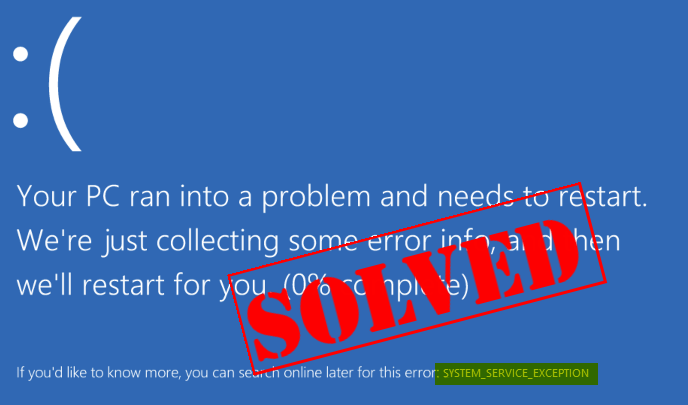
Are you getting the SYSTEM SERVICE EXCEPTION blue-screen error in Windows? There’s nothing scarier, in the Windows world! But don’t worry. You’re not alone. The System Service Exception blue screen of death (BSOD) error is quite common, but it’s also usually quite simple to fix. Here’s how…
4 fixes for the System Service Exception blue-screen error
Here are 4 ways you can fix this problem, ordered by likely effectiveness. You probably won’t need to try them all. Just work your way down the list until you find the solution that works for you.
- Update your device drivers (RECOMMENDED)
- Revise recent system changes
- Repair corrupted system files
- Uninstall any third-party antivirus applications
Fix 1: Update your device drivers (RECOMMENDED)
Most of the time, the System Service Exception error is caused by incompatible, faulty or outdated drivers.
Don’t worry; it’s probably not something you did. Drivers can become a problem overnight – one day they’re working fine, the next, they’re causing a blue-screen. That’s because your computer is constantly updating its version of Windows, and the devices themselves routinely install new drivers. With all these changes, it’s only a matter of time until something fails or gets out of sync.
Driver Easy will automatically recognize your system and find the correct drivers for it. You don’t need to know exactly what system your computer is running, you don’t need to be troubled by the wrong driver you would be downloading, and you don’t need to worry about making a mistake when installing. Driver Easy handles it all.
You can update your drivers automatically with either the 7 days free trial or the Pro version of Driver Easy. It takes just 2 clicks, and you get full support and a 30-day money-back guarantee with the Pro version:
- Download and install Driver Easy.
- Run Driver Easy and click the Scan Now button. Driver Easy will then scan your computer and detect any problem drivers.
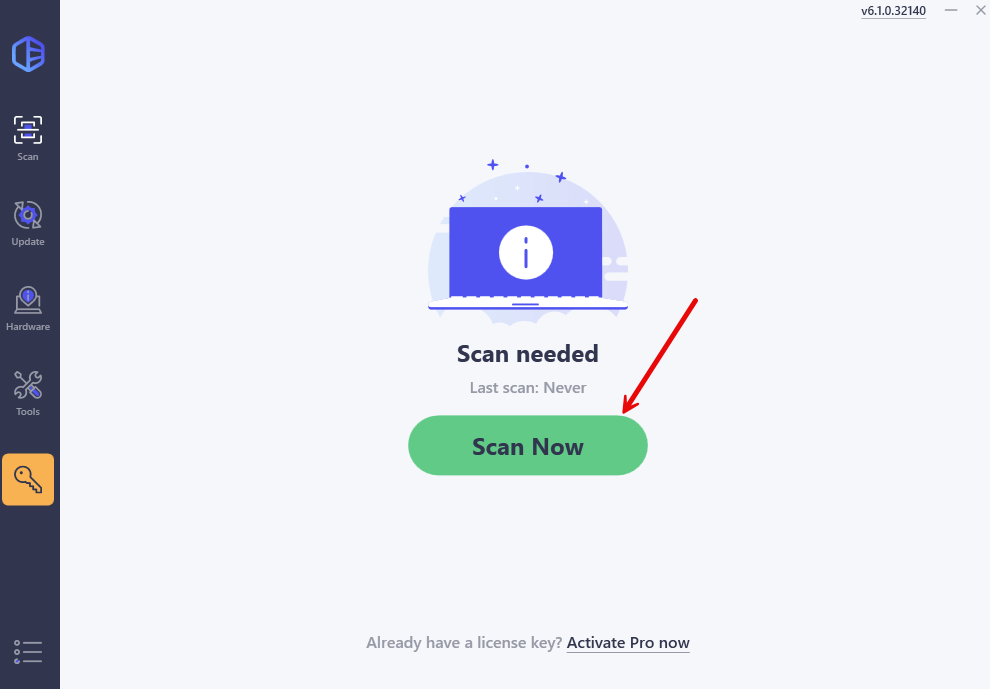
- Click the Activate & Update button next to the flagged device to automatically download and install the correct version of this driver.
Or click Update All to automatically download and install the correct version of all the drivers that are missing or out of date on your system (You’ll need the Pro version for this – when you select Update All, you’ll get a prompt to upgrade. If you’re not prepared to purchase the Pro version yet, Driver Easy provides a 7-day trial at no cost, granting access to all Pro features like fast downloads and easy installation. No charges will occur until after your 7-day trial period ends.)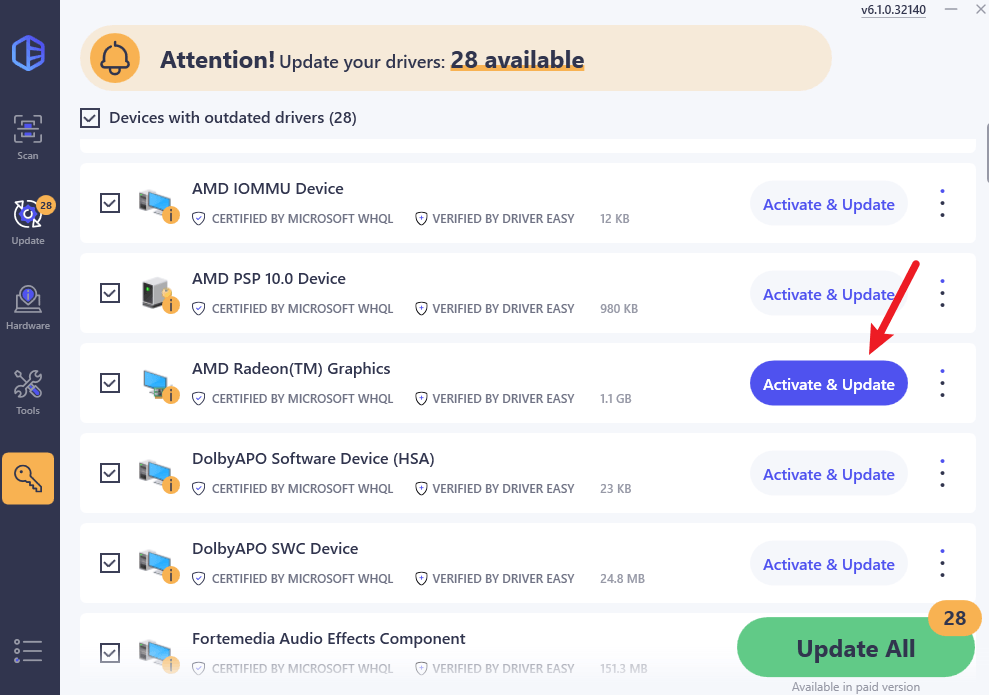
- Restart your computer for the change to take effect.
Fix 2: Revise recent system changes
One of the causes of this blue screen error could be recent changes you’ve made to your system. If you’ve added new hardware or software to your system recently, remove them to see if the problem is fixed. Or check to see if any vendors have patches you can apply.
Fix 3: Repair corrupted system files
The System Service Exception blue screen error could also be caused by corrupt or faulty system files. To detect and fix potential system failures, you could run an in-depth PC scan.
System File Checker (SFC) is a Windows built-in tool to identify and repair corrupted system files . But checking and restoring system files manually may require some time and computer skills, and you may risk your personal data.
1) On your keyboard, press the Windows logo key and S at the same time, type cmd, then right-click Command Prompt and click Run as administrator.
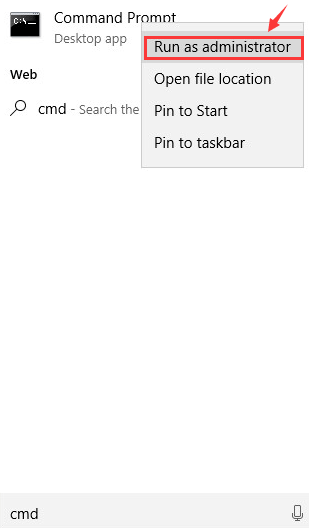
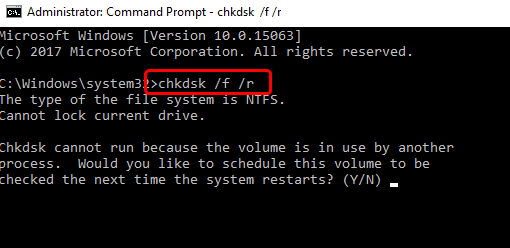
2) Type chkdsk /f /r, then press Enter on your keyboard.
3) Press Y on your keyboard.
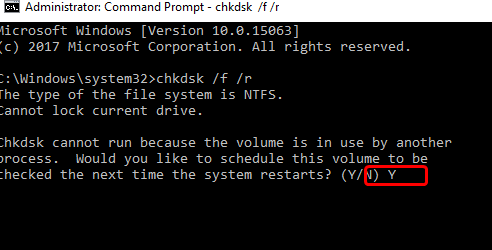
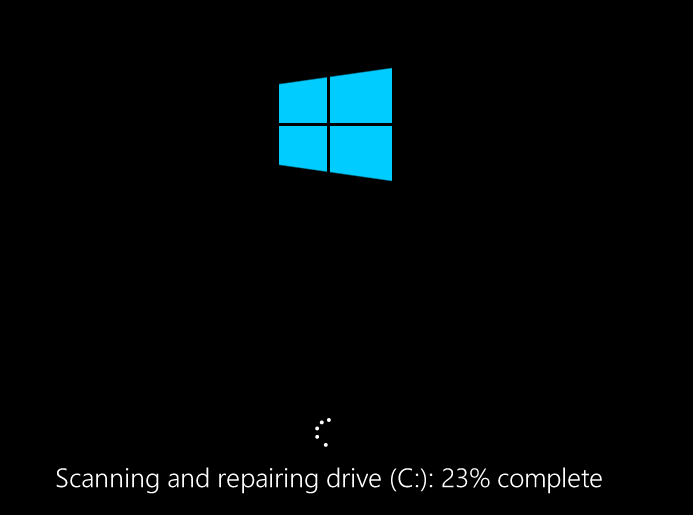
4) Restart your PC. Wait for the scans to finish (it can take up to 15-20 minutes).
5) Check if the problem is resolved.
Fix 4: Uninstall any third-party antivirus applications
If you have an antivirus program other than Windows Defender on your PC, it may be causing the System Service Exception blue screen error.
So if you’re using antivirus software such as McAfee, BitDefender, Virtual Clone Drive etc., you should disable it. If this resolves the problem, contact the program’s support team for more assistance. (Or just uninstall the program completely. Windows Defender is more than enough for most ordinary users.)





